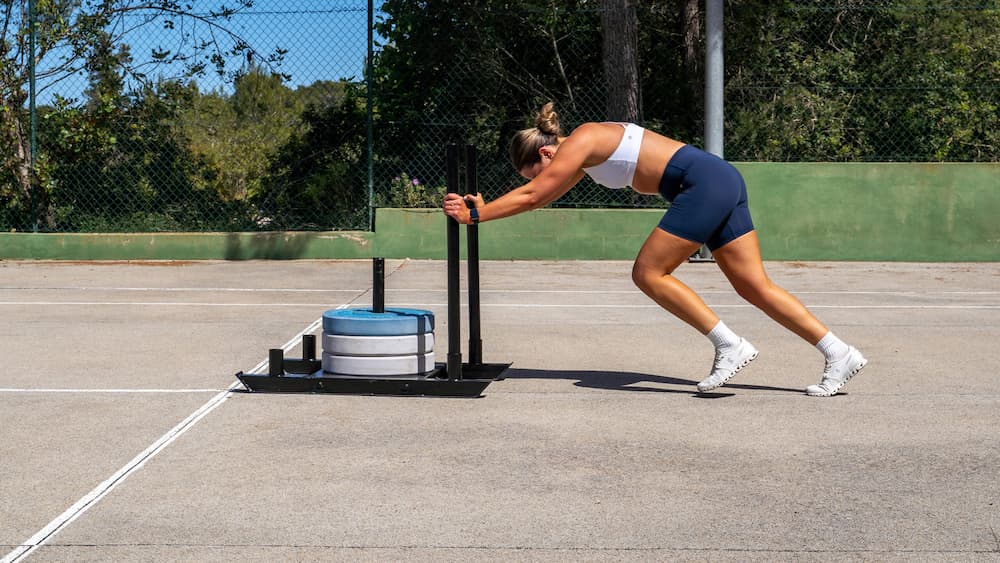When it comes to nutrition and overall wellbeing, we’re all about keeping it simple. Eat well, move often, lift some heavy stuff, sleep well, and avoid getting too stressed out.
Here are coaches Quinny and Tom chatting through some of the elements at play:
If you’re interested in the science behind weight loss, here are the fundamental building blocks.
Energy balance is the key to maintaining a healthy weight. It’s all about finding the right equilibrium between the energy we consume and the energy we burn.
There are a few factors at play here:
- Basal Metabolic Rate (BMR): This is the energy our body needs to perform basic functions like breathing, circulating blood, and maintaining body temperature.
- Non-Exercise Activity Thermogenesis (NEAT): NEAT refers to the energy we burn during daily activities like walking, standing, or fidgeting (when we’re not consciously exercising).
- Total Daily Energy Expenditure (TDEE): TDEE is our total calorie burn – BMR plus NEAT – the amount of calories our body needs in a day to maintain its current weight.
To maintain a healthy energy balance, we need to burn as many calories as we consume.
But it’s not always that simple…
Our bodies ALSO have a complex hormonal system that regulates appetite, metabolism, and fat storage.
These can be affected by individual differences, genetic factors, underlying health conditions, and stage of life; as well as external factors like how much we sleep, how stressed we are, and how much weight we’re carrying.
The major players here are:
- Leptin: Produced by fat cells, leptin helps regulate hunger and signals to our brain that we’re full.
- Ghrelin: This hormone stimulates hunger. When our stomach is empty, ghrelin levels rise, signalling our brain that it’s time to eat.
- Insulin: Insulin plays a crucial role in regulating blood sugar levels. It helps cells absorb glucose from the bloodstream, converting it into energy or storing it as fat.
- Cortisol: Known as the “stress hormone,” cortisol is released during periods of stress. It can influence appetite and cravings, leading to changes in food intake.
In addition to these universal hormones, there are some gender-related factors that affect our fat loss journey.
For males, the relatively higher levels of testosterone can make it easier for us to build muscle, increasing our basal metabolic rate making it easier to lose fat. In females, hormonal fluctuations throughout the menstrual cycle can affect appetite, water retention, and overall energy expenditure.
Menopause in females and andropause in males also trigger hormonal changes. During menopause, estrogen levels decline, which can lead to an increase in abdominal fat storage. In males, testosterone levels gradually decrease during andropause, potentially leading to a decrease in muscle mass and metabolic rate.
Finally, as we get older, there’s a natural overall decline in hormone production which can affect both metabolism and muscle mass, making it easier to gain fat and harder to maintain muscle.
This all sounds a bit complicated, but our basic formula remains the same: eat well, move often, lift some heavy stuff, sleep well, and avoid getting too stressed out.
Here are some simple tips which will get you a long way on your fat-loss journey:
- Choose nutrient-dense foods like whole grains, lean proteins, fruits, vegetables, and healthy fats. These provide essential nutrients without excessive calories. Drink PLENTY of water.
- Mind your portions and listen to your body’s hunger and fullness cues. Avoid overeating and stop when you feel satisfied, not stuffed.
- Stay active throughout the day by incorporating physical activity into your routine. Find activities you enjoy and make them a part of your daily life, whether it’s walking, dancing, or playing a sport.
- Schedule structured exercise into your routine to build muscle mass which burns more calories at rest. We recommend Small Group Personal Training at Foundry because it provides all the building blocks of long-term fitness. It’s more cost-effective than one-to-one personal training; and each session is a full body workout that makes the most of your time. And because we run sessions every hour, you’re more likely to find a slot that works for you.
- Minimise stress and maximise good-quality sleep. We know this is often easier said and done in today’s busy world, but even small changes can make a big difference.
By finding a balance between the energy we consume and the energy we burn, we can achieve and maintain a healthy weight. It’s all about nourishing our bodies with nutritious food, staying active, and getting the R&R we need to stay on track.
At Foundry, we stick to our Four Pillars of Wellbeing to get results that stick: Eat, Move, Think, and Belong.
And because we know that signing up to a gym can feel like a big deal, we offer a 21-Day Challenge so you can try us out, no strings attached.
Find out more here; or book a call with a friendly member of our team here.
Related Articles
- Weight Loss – What You Need to Know
- Weight Loss vs Fat Loss
- How Much Jogging Should I Be Doing for Weight Loss Goal?
- Is Stress Blocking Your Fat Loss Goals?
- Vitamin D For Fat Loss And Gaining Muscle

